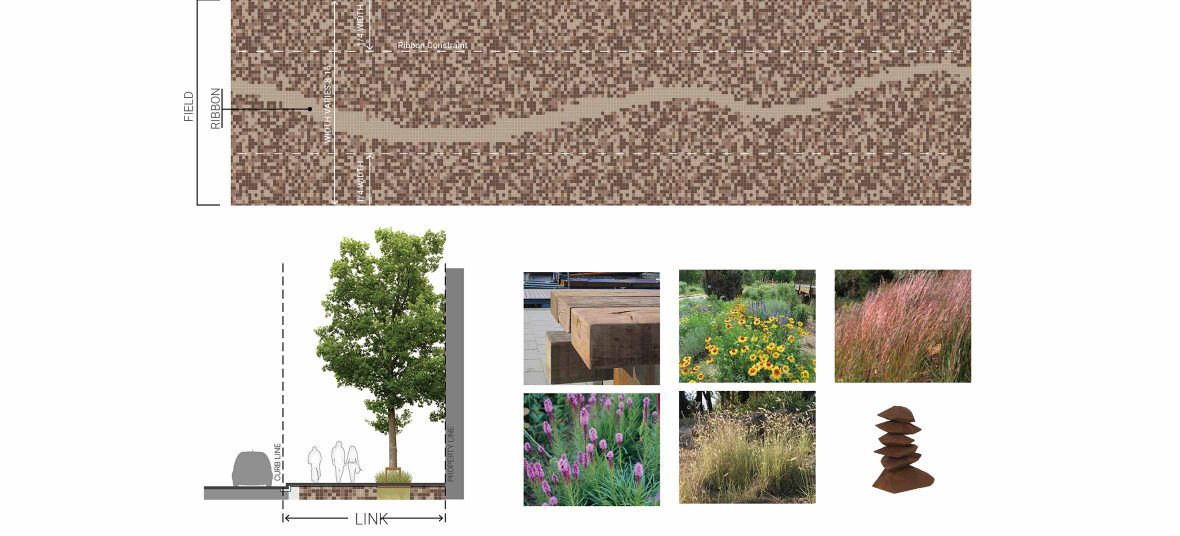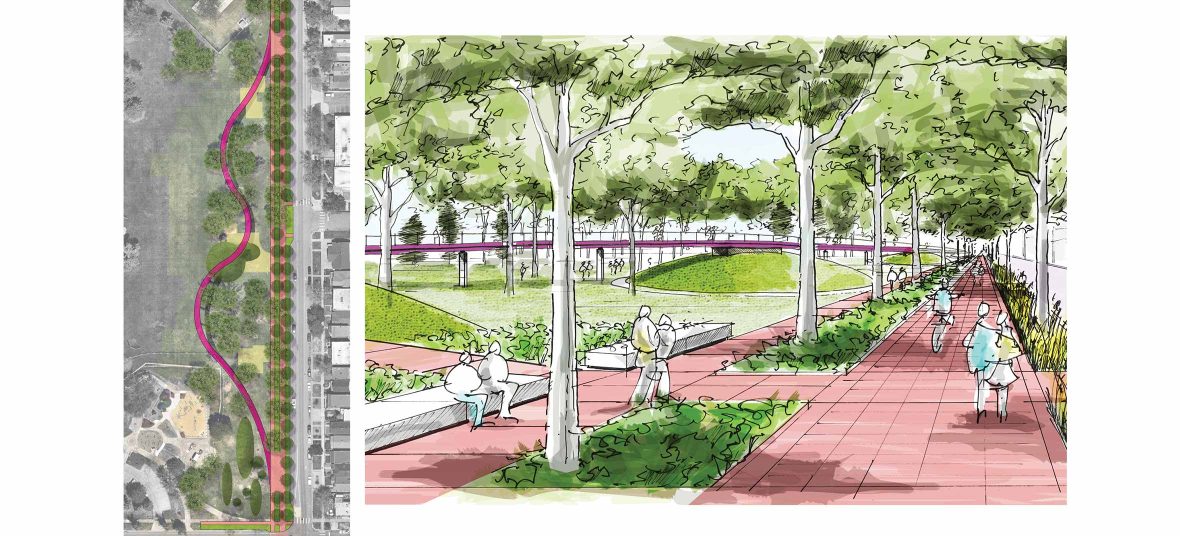A trail is a path set through a wild environment, a guiding route to navigate you through and connect you to points of interest and destinations. It is typically defined by its edges and by the environment that surrounds it. The trail serves as the vehicle to get you out into these environments, exploring a specific place, often in new and different ways than you’ve experienced before. The same can be said of The 5280 Trail in Denver, a new safe and intuitive way to explore the wild urban fabric by foot or bike. Defined by the six neighborhoods that it threads together, the trail gets people out to experience these neighborhoods in new and different ways, with new perspectives.
There are clues about the 5280 Trail’s design philosophy within its name. The design team was inspired by Colorado’s outdoor lifestyle and by the mountain trail mentality that is so present here. We wanted to create something in the city that mimics this mentality—that mimics the simplicity and clarity of being on a mountain trail. There’s a notion, after all, that you’re never lost when you’re on the trail, and we wanted this urban loop to feel equally comfortable, inviting and reassuring. The idea of creating a trail through the urban jungle became the driving force of our designs.







